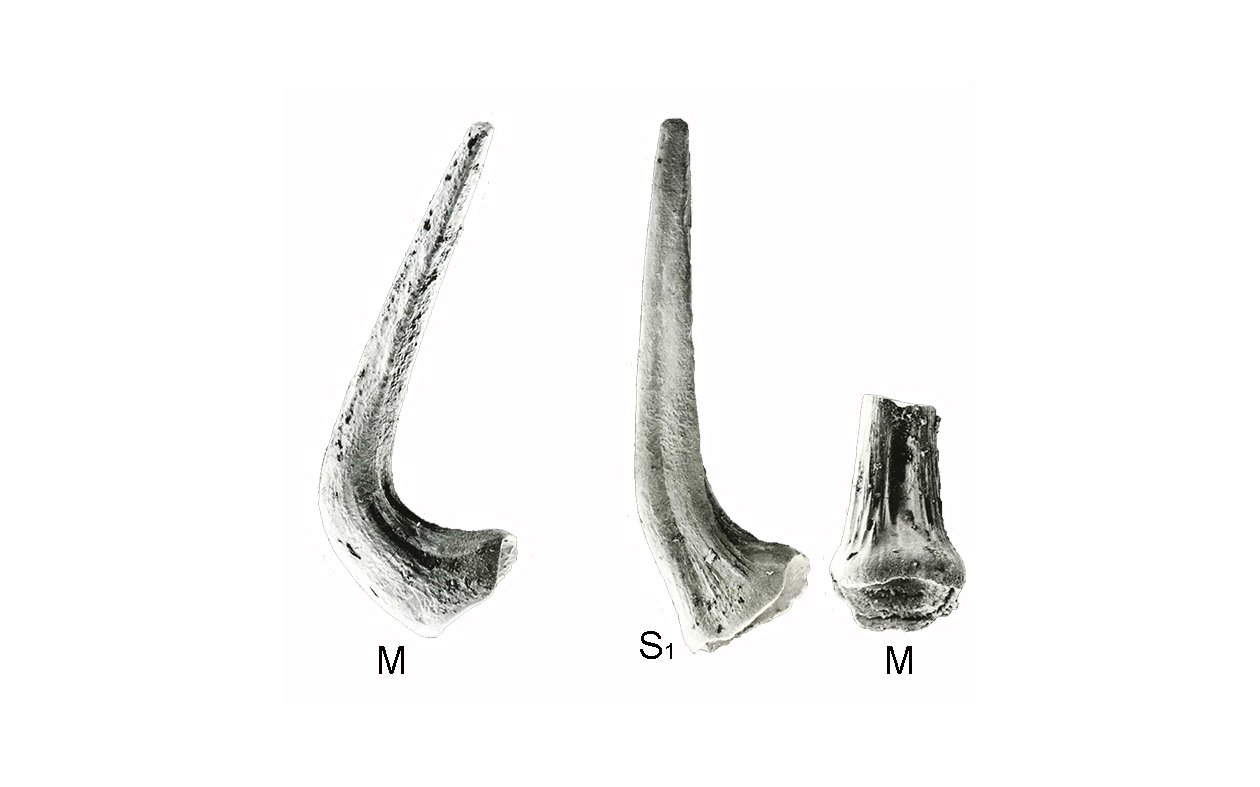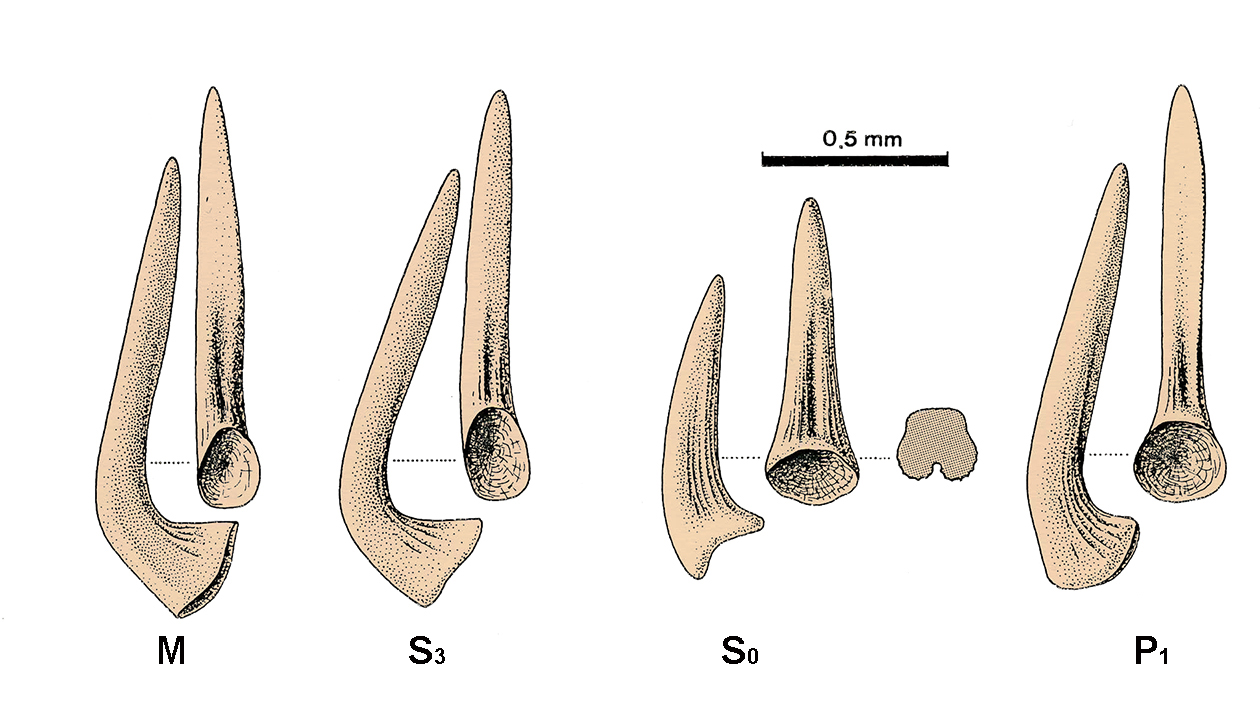Diagnoza
The symmetrical tr element with a subsquare cross section at the base of the cusp and with a wide medial furrow. Porównanie
The apparatus was identified by DZIK ( 1976) . From its presumed ancestor, S. cornuformis, the species differs in the non- alate appearence of the tr element and in more prominent ornamentation at the inner side of the cusp base. Autekologia Występowanie geograficzne
Holy Cross Mountains and Volhynia, Jamtland in Sweden Zasięg czasowy
From the Lasnamagian to Kukrusean, probably present also in older (latest Kundan and Aserian) beds.
In Mójcza it occurs from the discontinuty surface (E . reclinatus or E. robustus Subzone) up to about 2.0 m above the bentonite (A . tvaerensis/superbus transition zone ). Materiały muzealne Literatura
Dzik, J. 1994a Conodonts of the Mójcza Limestone. In: J. Dzik, E. Olempska, & A. Pisera. Ordovician carbonate platform of the Holy Cross Mountains. Palaeontologia Polonica 53, 43-128. | 

